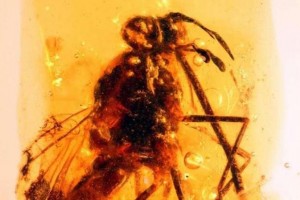105 Million Years Ago, Flies Were Doing The Pollinating

BARCELONA, Spain, July 10 (UPI) — The Cretaceous Period featured neither bees nor butterflies. So were ancient plants pollinated? It turns out flies did all the work.
In a new study, published in the journal Current Biology, researchers from the University of Barcelona detail a number of amber fossils, each revealing fly specimens that fed on nectar and pollinized gymnosperm plants around 105 million years ago.
The new research highlights the important role two species of flies played in the ancient forests of the Iberian Peninsula, which was an island during the Cretaceous Period. The two species belonged to the family Zhangsolvidae.
Today, flowering plants (angiosperms) attract the attention of nature’s most prolific pollinators — bees and butterflies, and to a lesser extent, beetles and flies. But the giant forests of ancient Iberia were dominated not by flowers and their nectar, but by gymnosperms — pines, firs and cycads.
These tall trees relied mostly on wind for pollination. But flies helped, using a long proboscis to slurp sap mid-flight in a strategy similar to a hummingbird’s feeding methods.
The newly detailed amber fossils reveal flies with neatly preserved proboscises, as well as a pollen grains from an ancient Bennettitalean species, an extinct order of gymnosperms.
The discovery holds promise for scientists hoping to shed light on the transition from a gymnosperm-dominated ecosystem to one filled with angiosperms. Such efforts have proven difficult without evidence of ancient pollinating insects.
“If insects were able to feed on gymnosperms flower structures, it is probably true that the transition to angiosperms took place then,” the authors of the new study wrote, optimistically.
Like Us on Facebook for more stories from GephardtDaily.com







